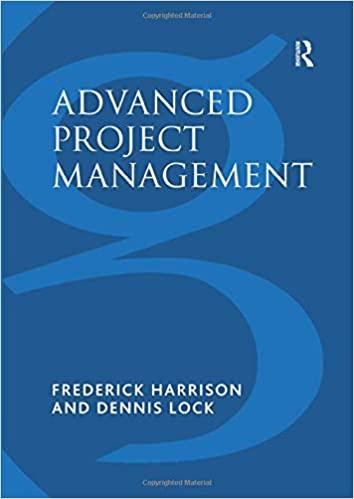Question
Please explain for part 3, how was the decrease in profit of $105,000 calculated. That's it. Thank you. Exercise 10-16 Make or Buy a Component
Please explain for part 3, how was the decrease in profit of $105,000 calculated. That's it. Thank you.
Exercise 10-16 Make or Buy a Component [LO3]
| For many years, Diehl Company has produced a small electrical part that it uses in the production of its standard line of diesel tractors. The companys unit product cost for the part, based on a production level of 60,000 parts per year, is as follows: |
| Per Part | Total | |||
| Direct materials | $ | 4.00 | ||
| Direct labor | 2.75 | |||
| Variable manufacturing overhead | 0.50 | |||
| Fixed manufacturing overhead, traceable | 3.00 | $ | 180,000 | |
| Fixed manufacturing overhead,common (allocated on the basis of labor-hours) | 2.25 | $ | 135,000 | |
| Unit product cost | $ | 12.50 | ||
| An outside supplier has offered to supply the electrical parts to the Diehl Company for only $10.00 per part. One-third of the traceable fixed manufacturing cost is supervisory salaries and other costs that can be eliminated if the parts are purchased. The other two-thirds of the traceable fixed manufacturing costs consist of depreciation of special equipment that has no resale value. Economic depreciation on this equipment is due to obsolescence rather than wear and tear. The decision to buy the parts from the outside supplier would have no effect on the common fixed costs of the company, and the space being used to produce the parts would otherwise be idle. |
| Required: |
| 1. | Determine the total relevant cost if parts are made inside the company. (Do not round intermediate calculations.) |
| Total relevant cost (60,000 parts) | $ | |
| 2. | Determine the total relevant cost if parts are purchased from the outside supplier. |
| Total relevant cost (60,000 parts) | $ | |
| 3. | What is the increase or decrease in profits as a results of purchasing the parts from the outside supplier rather than making them inside the company? (Input the amount as a positive value. Do not round intermediate calculations.) |
| Profit would | decrease | by | $ | per year |
Explanation:
1 & 2.
| Relevant Costs | |||||
| Item | Make | Buy | |||
| Direct materials (60,000 @ $4.00) | $ | 240,000 | |||
| Direct labor (60,000 @ $2.75) | 165,000 | ||||
| Variable manufacturing overhead (60,000 @ $0.50) | 30,000 | ||||
| Fixed manufacturing overhead, traceable (1/3 of $180,000) | 60,000 | ||||
| Cost of purchasing from outside supplier (60,000 @ $10) | $ | 600,000 | |||
| Total cost | $ | 495,000 | $ | 600,000 | |
| The two-thirds of the traceable fixed manufacturing overhead costs that cannot be eliminated, and all of the common fixed manufacturing overhead costs, are irrelevant. |
3.
| The company would save $105,000 per year by continuing to make the parts itself. In other words, profits would decline by $105,000 per year if the parts were purchased from the outside supplier. |
Step by Step Solution
There are 3 Steps involved in it
Step: 1

Get Instant Access to Expert-Tailored Solutions
See step-by-step solutions with expert insights and AI powered tools for academic success
Step: 2

Step: 3

Ace Your Homework with AI
Get the answers you need in no time with our AI-driven, step-by-step assistance
Get Started


